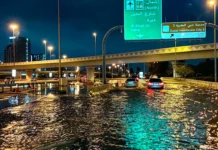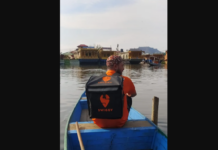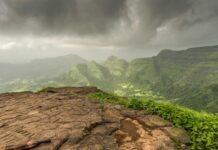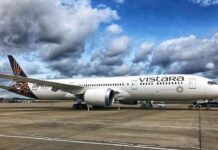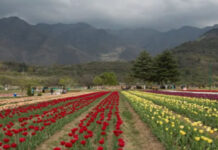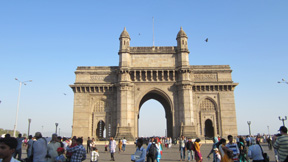 City of dreams & the financial capital of India
City of dreams & the financial capital of India
Renowned as the “Gateway of India” – Mumbai, the stalwart – stands majestically as the “Financial Capital of India”. Soft breeze of the Arabian Sea, breathtaking sea shore in the heart of the city and well connected metro facilities make this city an amalgamation of scenic views & striking manmade structures.
Mumbai, the capital of the state of Maharashtra is a representation of what India as a country stands for “Unity in Diversity”, as it embraces people from all cultures, religions & economic backgrounds to make it big in the city more often known as the “City of Dreams”. The resident “Mumbaikars” as they are known represent the attitude of oneness & the strength to come through any kind of natural calamity or political unrest.
Mumbai’s name was derived from the Hindu Goddess Mumbadevi. It is the most populous metropolitan city in India and is placed as the sixth most populated metropolis in the world. Erstwhile Bombay, now known as “Mumbai” lying on the gorgeous Konkan coast, is a major hub of industrial and commercial activities in the country contributing to nearly 70% of India’s capital trading and investments. Mumbai is also credited as one of the major seaports in the country, so do not miss exploring the port on your holiday packages to Mumbai.
Mumbai presents architectural styles which are a blend of modern designs & centuries old Gothic influences too. Home to one of the largest film industries in the world, churning out more than 300 films a year – “Bollywood” – as its popularly known, is the hub of all things creative from theater, arts, crafts, documentary to full on entertainment films, literary and artistic activities too. Its rich heritage can be seen in its several museums, art galleries & libraries.
 Vibrant and dynamic, Mumbai attracts tourists to its multi-ethnic home to see & experience its several attractions, modern amenities & the true flavor of “Amchi Mumbai”.
Vibrant and dynamic, Mumbai attracts tourists to its multi-ethnic home to see & experience its several attractions, modern amenities & the true flavor of “Amchi Mumbai”.
Tourist Attractions
Elephanta Caves: Elephanta Caves are located at Gharapuri Island, a congregation of three small villages near Mumbai. These caves, which are declared a UNESCO World Heritage Site, are frequented by domestic and foreign travelers alike. The caves are said to date back to the period between the 9th to 13th century AD and are famous for its ancient sculptures and the temple dedicated to Lord Shiva.
Gateway of India: Gateway of India is an impressive monument constructed to commemorate the visit of King George V & Queen Mary to the then “Bombay” in Dec 1911. It is placed perfectly in South Mumbai & is aptly called the Gateway of India. Built as a mammoth arch at a mighty height of 26 meters, it has an inner width of 15 meters. Its presence is symbolic to the city. The monument is a representation of the Indo-Saracen architectural style, with many features of the 16th century Muslim architectural excellence. This monument almost stands as an identity of the city – flanked by the ocean on one side & the monumental Taj Hotel to the other.
Jehangir Art Gallery: Jehangir Art Gallery, built in 1952 by Sir Cowasji Jehnagir, is one of the most attractive galleries in Mumbai. The art gallery is situated behind the renowned Prince of Wales Museum in Kala Ghoda.
This is a great specimen of Indian arts and crafts. A historic monument linked with the renaissance of Indian arts, tourists are also presented with the opportunity to own some of these precious artifacts of India from the antique shop associated with the art gallery.
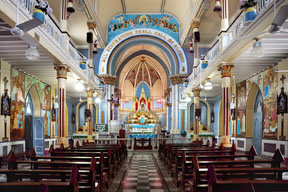 Kanheri Caves: Kanheri Caves are located well inside the thick forest area of Sanjay Gandhi National Park in Borivali. These caves numbering about 109, built during the Maurya and Kushana period, date back to 2nd century BC to 9th century. These caves once served as Buddhist Viharas, which were used for meditation, study and living by Buddhist monks. They were later turned into monasteries by the 3rd century.
Kanheri Caves: Kanheri Caves are located well inside the thick forest area of Sanjay Gandhi National Park in Borivali. These caves numbering about 109, built during the Maurya and Kushana period, date back to 2nd century BC to 9th century. These caves once served as Buddhist Viharas, which were used for meditation, study and living by Buddhist monks. They were later turned into monasteries by the 3rd century.
Mahakali Caves: Mahakali Caves, earlier known as Kondivita Caves, are located between Aarey Milk Colony and Borivali National Park in Mumbai. These are rock cut caves, carved out of solid hard rocks, with color of black basalt and are located at scenic picturesque Udayagiri hills. These caves, which served as Buddhist monasteries, date back to two thousand years.
Victoria Terminus (CST Terminus): Chhatrapati Shivaji Terminus, earlier known as Victoria Terminus in Mumbai, is an important building spotted in the UNESCO World Heritage List and is located at D N Road. In 1888 this building was built after nearly 10 years of construction, as the rail terminus based on the model of St Pancras Station in London. It was designed by English architect Frederick William Stevens.
Chowpatty Beach: The crowning glory of this concrete city is the refreshing Chowpatty beach, famed for the immersion of Ganesh idols on the penultimate day of the Ganesh Chathurthi festival. This beach, located at one end of Marine drive, is considered as a holy place, where many Hindu rituals like thread tying events are performed.
Hanging Gardens: The Hanging Gardens, also called as Ferozeshah Mehta Gardens built in 1881, is placed at the top of the Malabar Hills in Mumbai. It is located opposite the famous Kamala Nehru Park. Green bushy plants carved in shapes of animals are the main feature of this park. The best way to end an evening here is by catching a glimpse of the stunning sunset on the horizon of the Arabian Sea.
Marine Drive: Marine Drive is one of the most scenic stretches amid the concrete jungle of Mumbai. With six-lane roads alongside the Arabian Coast, it is officially known as Netaji Subhash Chandra Bose Road. This C shaped natural bay connects Malabar hills and Nariman Point in Mumbai.
Borivali National Park (Sanjay Gandhi National Park): Presently renowned as Sanjay Gandhi National Park, Borivali National Park is a unique wildlife park situated within the city limits of Mumbai. The Park was known as Krishnagiri Park during pre-independence period and later as Borivali National Park. In 1990 the park was renamed as Sanjay Gandhi National Park. It has the reputation of being the most visited National Park and also being the world’s largest park within the city limits.
Mahalaxmi Temple: Mahalaxmi Temple, a temple dedicated to Goddess Mahalaxmi the wife of Lord Mahavishnu, was built in 1785 and is located on the Bhulabhai Desai Road near Worli. The common belief behind the temple is related to the construction of Hornby Vellard in Mumbai. The construction collapsed two times and the chief architect dreamt about the Goddess Laxmi statue in the Sea near the place. It is believed that after the temple was built, the construction of the Vellard went on smoothly.
Essel World: Famed to be India’s largest amusement park & Asia’s theme water park – Essel World is every kid & adult’s dream come true. Ideal for a day outing with your office team or friends & family alike, the park has something in store for everyone visiting. Located at the coastal village of Gorai, the park spans a sprawling 64 acres which have both exciting dry rides and fun water rides too. Attracting over 1.8 million visitors each year, this is by far one of the most fun things you can do while at Mumbai.
 Colaba Causeway: Colaba Causeway, a prime shopping spot bustling with tourist activities, is a major road link elevated by a bank between Mumbai’s Old Woman’s Island and Colaba. The causeway, established by English East India Company, is parallel to Gateway of India and is woven with shops, hotels, cinema halls and restaurants.
Colaba Causeway: Colaba Causeway, a prime shopping spot bustling with tourist activities, is a major road link elevated by a bank between Mumbai’s Old Woman’s Island and Colaba. The causeway, established by English East India Company, is parallel to Gateway of India and is woven with shops, hotels, cinema halls and restaurants.
Fashion Street: One of the most vibrant, varied & tempting shopping experiences await you at Mumbai’s Fashion Street. Every fashion junkie’s dream comes true as soon as you spot this stretch of colorful stalls, selling everything from vivid color beads, the latest apparel trends both Indian as well as Western styles, multi-hued bags & much more at very low prices
Best time to visit
Humid and dry seasons dominate Mumbai’s weather. The best time to visit is during the months from October to March.
How to reach
By Train: Mumbai is the headquarters of Indian railway system. Chhatrapati Shivaji Railway Station is the major one which connects most parts of Indian cities to Mumbai. Other railway stations in Mumbai are Dadar, Kurla, and Churchgate.
By Air: Mumbai has its own domestic and international airport, known as Chatrapati Shivaji international airport. Almost all airlines provide services to Mumbai. Mumbai is well connected to all major cities in India and also connected to many cities abroad including Singapore, New York, Bangok, Hong Kong and to many Gulf cities.
By Bus: Mumbai has an excellent road transportation system. State owned buses connect Mumbai to all neighboring points. Many Deluxe and Super Deluxe buses are available to travel in and out of the city.

